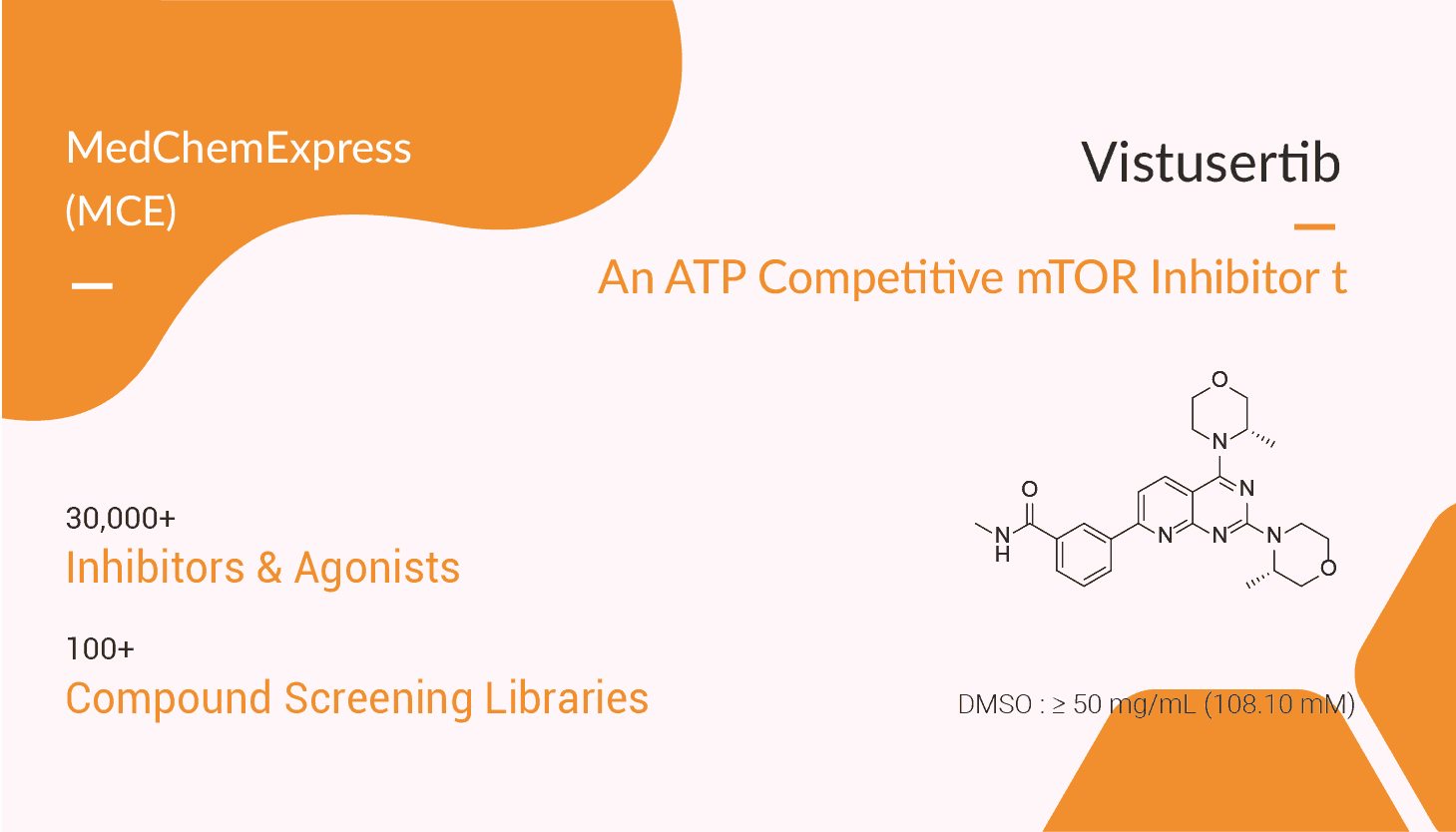mTOR is an atypical serine threonine kinase involved in regulating major cellular functions, such as nutrients sensing, growth, and proliferation. mTOR is part of the multiprotein complexes mTORC1 and mTORC2. mTORC1 and mTORC2 have been shown to play critical yet functionally distinct roles in the regulation of cellular processes. Current clinical mTOR inhibitors only inhibit the mTORC1 complex and are derivatives of the macrolide rapamycin (rapalogs).
In this article, we will introduce a mTOR inhibitor Vistusertib (AZD2014). Vistusertib (AZD2014) has a greater inhibitory function against mTORC1 than the clinically approved rapalogs.
Vistusertib is an ATP competitive mTOR inhibitor with an IC50 of 2.81 nM. AZD2014 inhibits both mTORC1 and mTORC2 complexes.

Isolated recombinant mTOR enzyme (IC50 of 2.81 nM) as well as in cellular assays measures the inhibitory effects of Vistusertib (AZD2014). In MDAMB468 cells, Vistusertib (AZD2014) decreases the phosphorylation of the mTORC1 substrate ribosomal protein S6 (Ser235/236) with a mean IC50 value of 210 nM. It also decreases the mTORC2 substrate AKT (Ser473) with a mean IC50 value of 78 nM.
Vistusertib (AZD2014) induces dose-dependent tumor growth inhibition in several xenograft and primary explant models. The antitumor activity of Vistusertib (AZD2014) has associations with modulation of both mTORC1 and mTORC2 substrates. It is consistent with its mechanism of action.
The administration of doses between 7.5 and 15 mg/kg test the pharmacokinetics of Vistusertib (AZD2014) in mice. Cmax and AUC increases dose-dependently following single dose and repeat dosing of AZD2014. The Cmax ranges from 1 to 16 μM and AUC ranges from 220 to 5,042 μM·h. SCID mice bearing MCF7 xenografts follows the administration of 3.75, 7.5, and 15 mg/kg AZD2014. It assesses the pharmacodynamic effect of Vistusertib (AZD2014) against an mTORC1 biomarker and an mTORC2 biomarker. There is a good relationship between the drug plasma concentrations and biomarker levels (estimated p-AKT IC50 of 0.119 μM total, 53% SE, and estimated p-S6 IC50 0.392 μM, 28.8% SE).
Reference: